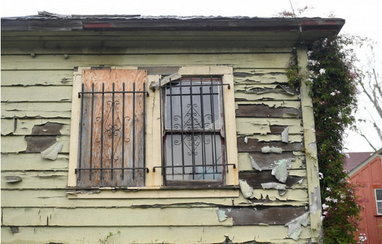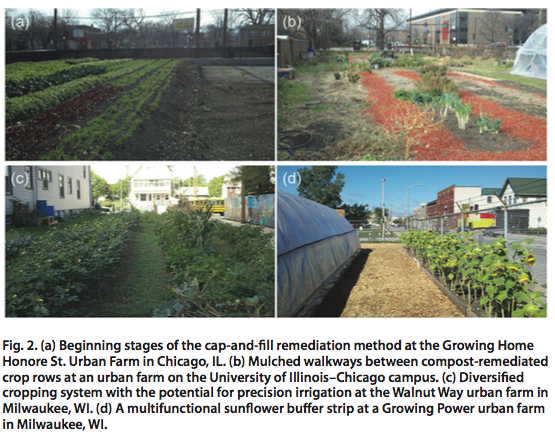 Paint chipping off a house in Emeryville, CA. Photo: Noah Berger/Reuters Paint chipping off a house in Emeryville, CA. Photo: Noah Berger/Reuters Many community gardeners and urban farmers are concerned with soil lead contamination, and rightly so. Lead is a neurotoxin and is linked to changes in children’s brain development and lowered IQs. The Flint, MI water crisis has put children’s blood lead levels in the news for months, adding fuel to a long-held assumption that lead problems are worst in older rust belt and industrial cities in the US Midwest and on the East Coast. However, recent analyses by Reuters show children living in older West Coast neighborhoods also have dangerously high blood lead levels. In city center neighborhoods from Los Angeles to Fresno to the Bay Area to north coast cities, child blood lead levels are elevated. Children in at least 29 California neighborhoods have higher blood lead levels than those in Flint, MI. This could be due to water contamination, like in Flint, but also direct exposure to lead paint, and contaminated soil. How can people know if they are at risk for lead exposure from lead contaminated soil? Old houses and proximity to high-traffic roads and industry are key factors. This issue cuts across class lines, yet higher risk areas are often low income communities where negligent landlords have not maintained rental properties carefully. Peeling paint, and paint that is carelessly sanded off, essentially goes directly into the soil around a house. Often, concentrations are highest directly adjacent to a house, and decrease as you move into a yard. Soil testing to identify lead contamination is important but expensive and can seem inaccessible. Because lead contamination is a public health risk with documented effects on community safety, public health agencies and urban agricultural extension services should be subsidizing soil testing, following the University of Delaware Extension, which tests soil samples for lead for only $10. However, in this age of neoliberal privatization of public services, public funding is sorely lacking. In do-it-yourself community empowerment approaches, groups like the Worcester Roots Project do amazing youth-based work testing and remediating contaminated soil for gardeners. However, this DIY approach lies at a point of tension with the neoliberal state: in empowering communities to take care of problems on their own, DIY groups are essentially filling the gap in services left by a retreating, increasingly corporatized civic model. DIY groups scramble for limited funding while government programs (like the EPA’s lead poisoning reduction efforts) get cut. Despite these tensions, current grassroots soil cleanup efforts stem from a long legacy of important, effective community environmental and food justice work, including the Black Panther’s Free Breakfast Program. For gardeners, the expense of soil testing is offset by the ease of other risk reduction practices, which include heavily amending soil with compost, keeping soil mulched, not tracking any soil into houses, and washing all produce. Roots and leafy greens should only be grown in soils with low lead (<200-400 ppm), while fruiting crops and legumes can be grown in soil with moderate lead. Kansas State Extension and Cornell have published excellent guides summing up best management practices for gardening in lead contaminated soils. Lead contamination is a serious problem, but so is contamination with other metals and organic contaminants, like polycyclic aromatic hydrocarbons, or PAH’s. We know less about the behavior and effects of these soil contaminants than we know about lead. Learning more about the behavior of these toxins is a great application of science in the public interest. In the meantime, most experts agree that the health benefits of growing and eating fresh vegetables, especially while following the best management practices touched on above, outweigh the dangers of potential exposure to soil contaminants. Follow best management practices to bring healthy food to your table, safely!
2 Comments
|
AuthorSarick Matzen completed his PhD in Environmental Science, Policy, and Management department at University of California, Berkeley in 2020. He is now a postdoc in the Soil, Water, and Climate Department at the University of Minnesota working on iron cycling in marine systems. Archives
July 2019
Categories |

 RSS Feed
RSS Feed
